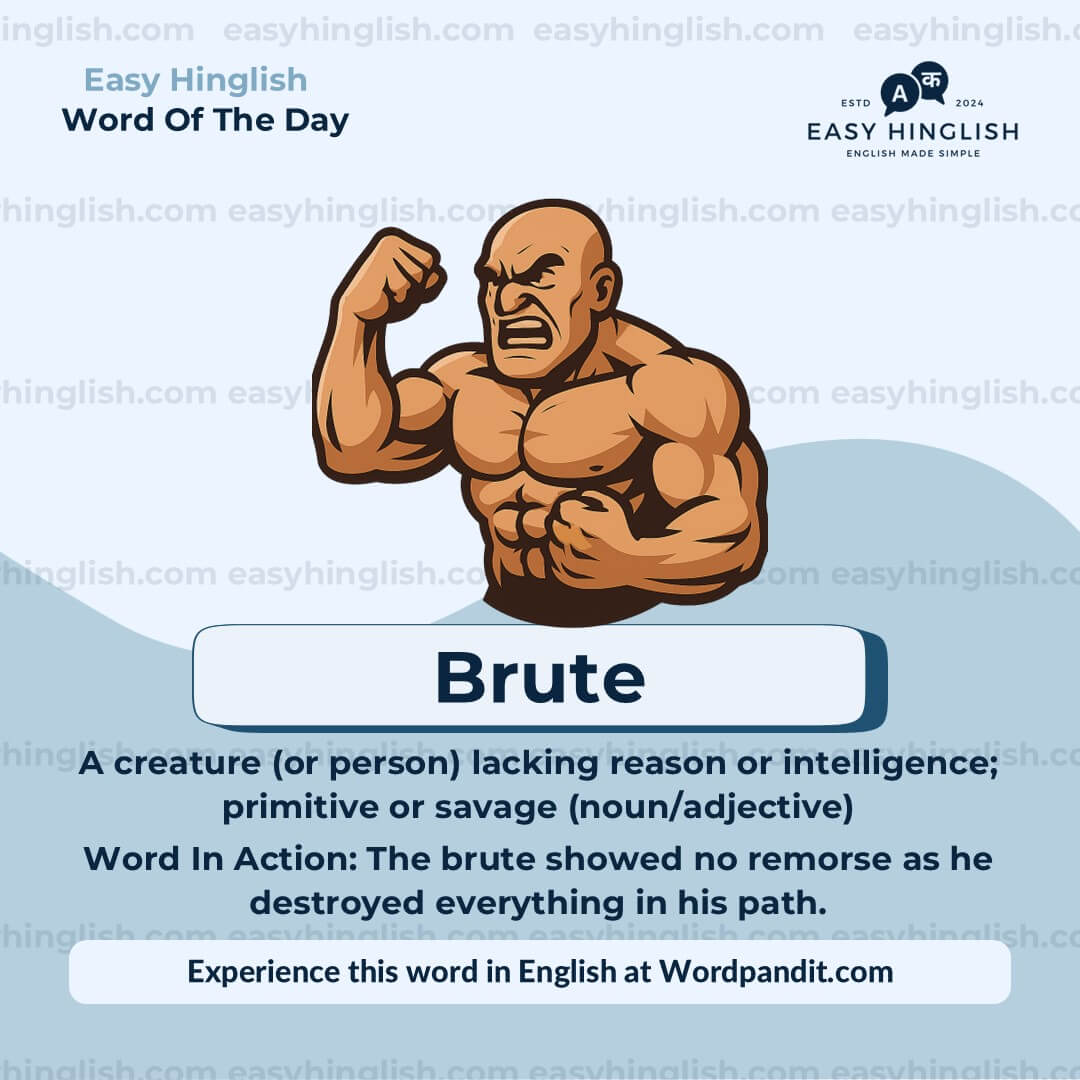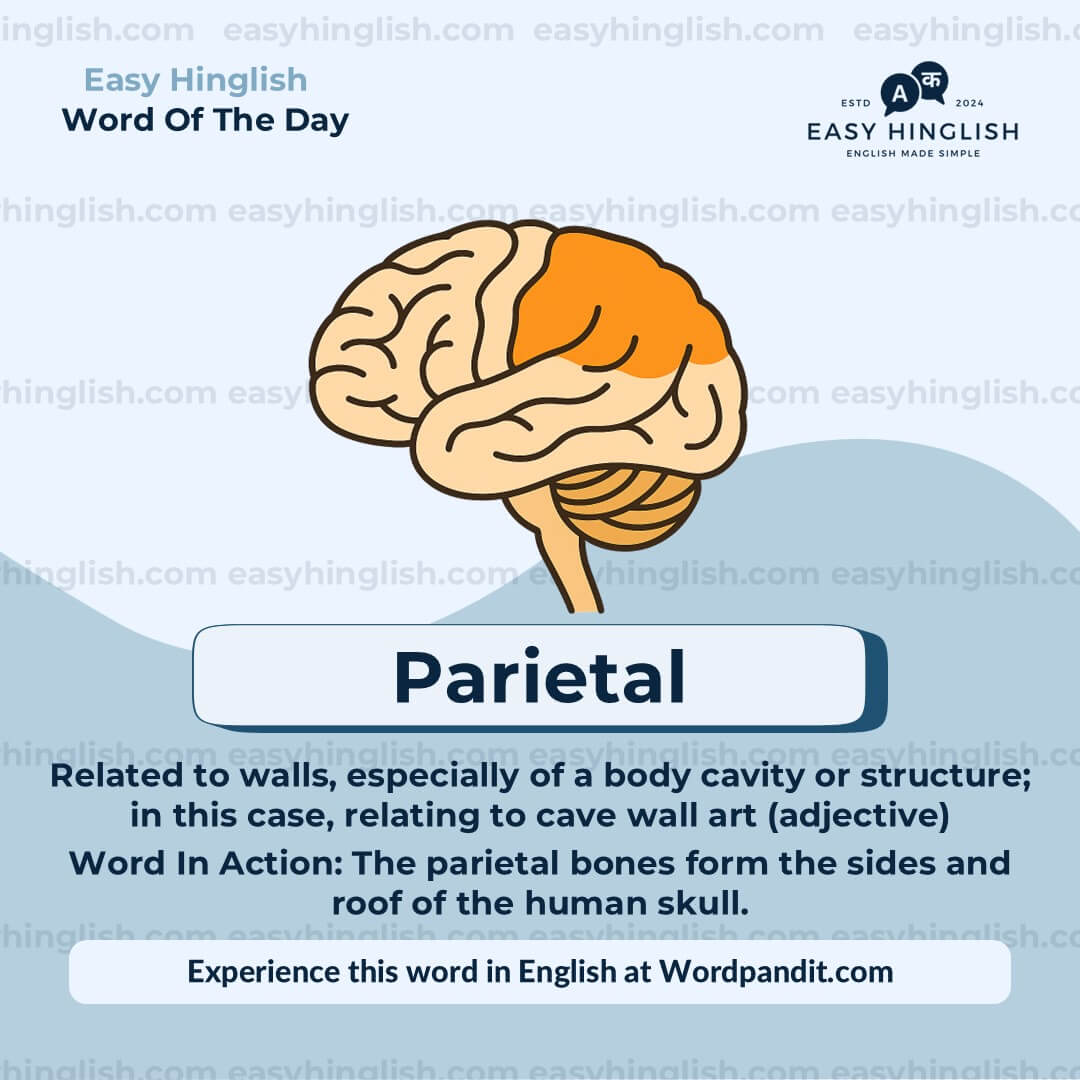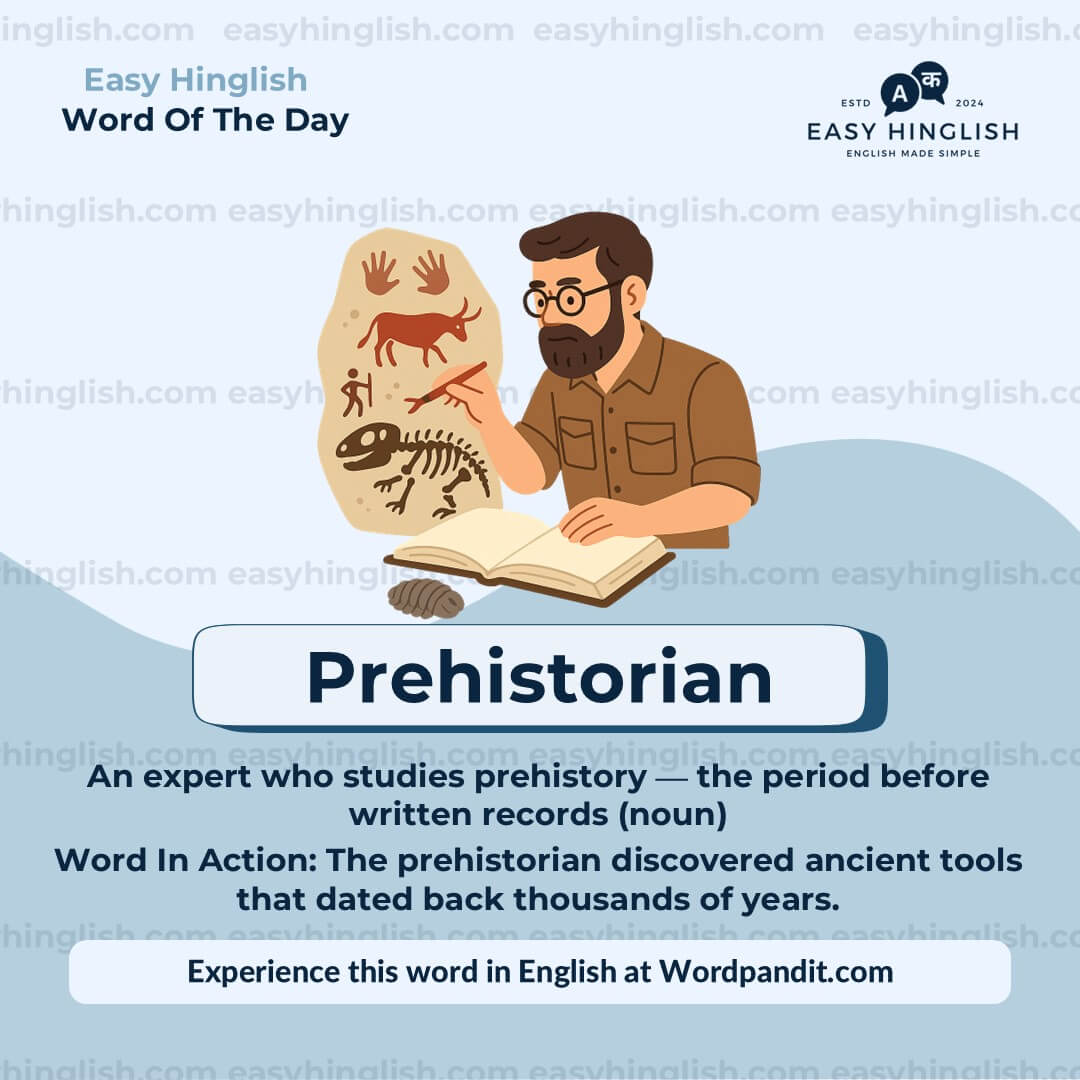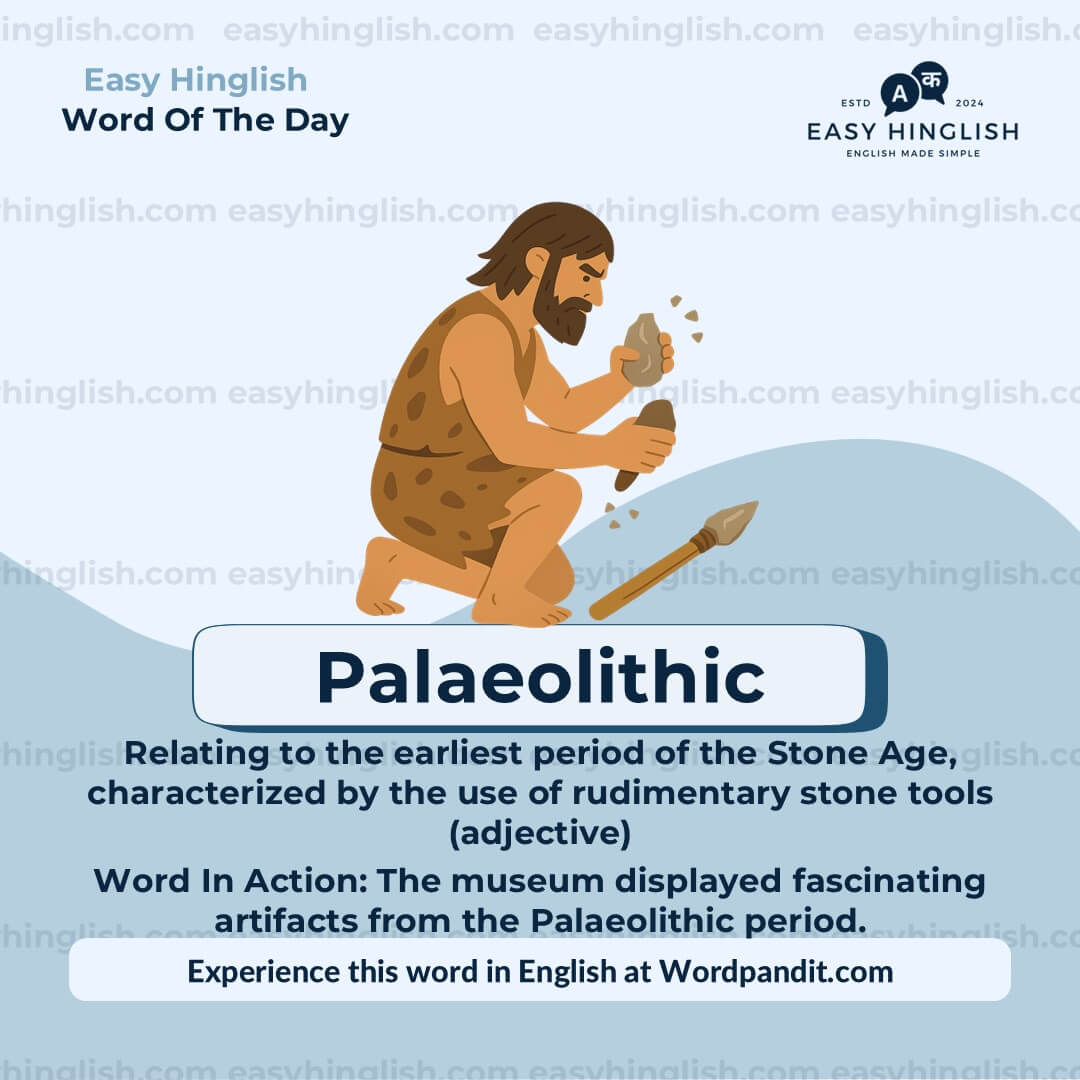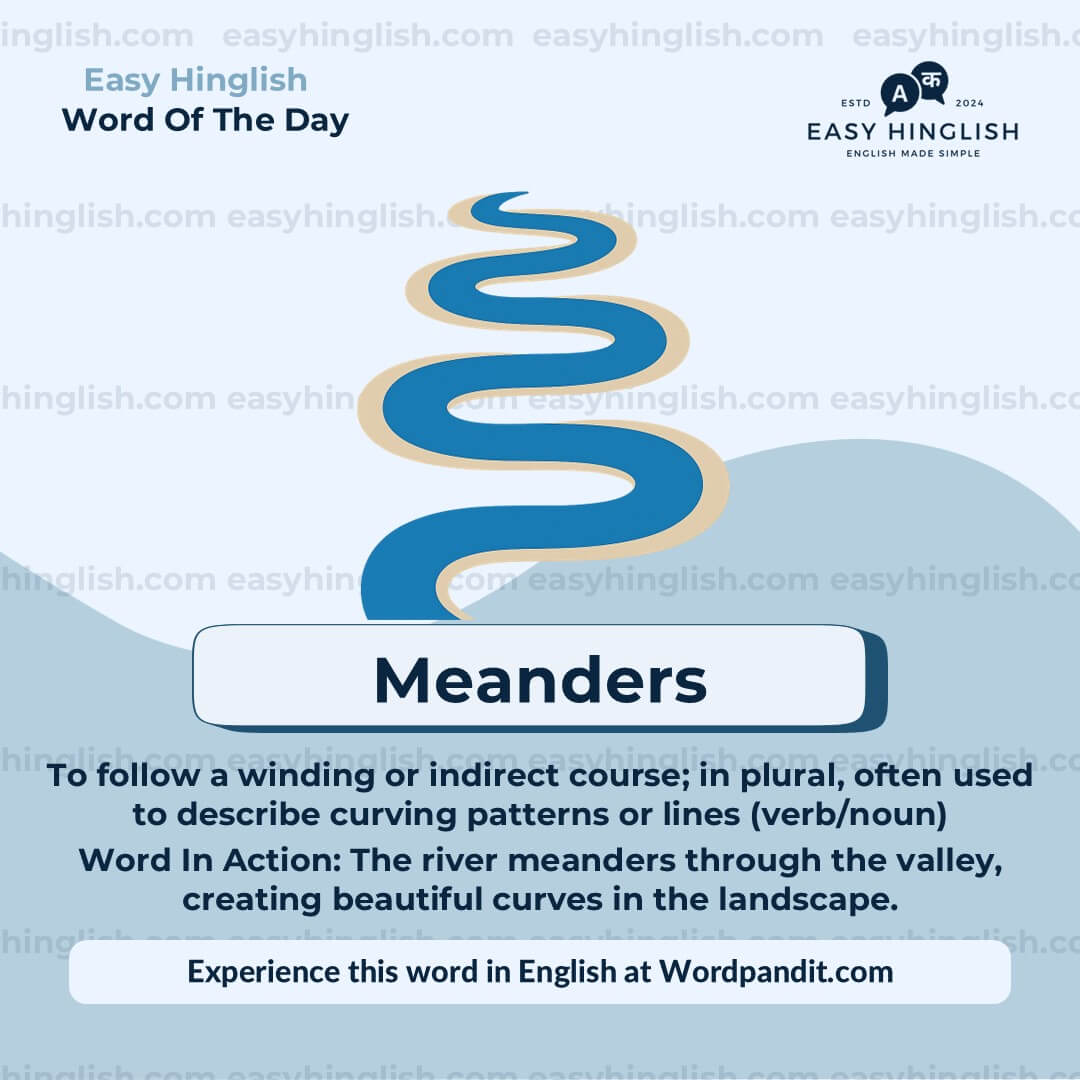Daily Vocabulary International Newspapers aur Publications se Seekho
Wordpandit ke Global Vocabulary Hub ke Saath Apni Vocabulary Expand Karo
Wordpandit par, hum aapko ek truly global vocabulary develop karne me madad karte hain, jo duniya ke sabse respected international publications se li gayi hoti hai. Yeh section aapko naye words se introduce karne ke liye design kiya gaya hai jo global conversations aur trends ko define karte hain.
Global Sources ka Power
Aapko globally sochne aur communicate karne me madad dene ke liye, hum vocabulary curate karte hain world ke top international sources se, jaise:
- The New York Times
- The Washington Post
- BBC
- The Guardian
- The Economist
- Scientific American
- Psychology Today
- Aur bhi bahut saare...
Globally Socho, Competitively Seekho
Hamare daily updates se aap international publications ke naye words seekhoge jo global news aur developments se jude hote hain. Isse aapki vocabulary current bhi rahegi aur globally relevant bhi.
Apni Global Soch Ko Expand Karo
Agar aap international exams ki tayari kar rahe ho, global business communication me excel karna chahte ho, ya sirf apni language skills improve karna chahte ho, toh Wordpandit aapko global level pe grow karne ke liye best resources provide karta hai.
Smart Learning, Global Reach
Hamari learning methodology me global examples, memory aids, aur interactive activities shamil hain, jo naye words ko effectively yaad karne aur real-world me use karne me madad karti hain.
Aaj Hi Apni Global Vocabulary Journey Shuru Karo!
Wordpandit Kyun Choose Karein?
Practical Learning: Aise words seekho jo real-world reading aur communication me aapko sach me kaam aayenge, taaki aapki comprehension aur bolne ki skills improve ho.
Diverse Content: Current affairs se lekar scientific breakthroughs tak, hamare different sources aapko multiple domains ki vocabulary seekhne ka moka dete hain.
Effortless Integration: Wordpandit ko apni daily routine ka part banao. Sirf kuch minute har din dene se aapki vocabulary time ke saath kaafi improve ho sakti hai.
Vocabulary Mastery Tak Ka Aapka Safar
- Regularly hamare Daily Vocabulary section ko visit karo
- Naye words explore karo aur unka context me use samjho
- In words ko apni writing aur bolne ki practice me use karne ki koshish karo
- Jaise-jaise aapke words badhte hain, apni progress ko track karo
Aaj Hi Apni Vocabulary Journey Shuru Karo!
Wordpandit ke saath vocabulary improve karna start karo. Roz thoda effort dalne se aap ek strong vocabulary develop kar sakte ho jo academic, professional, aur personal life me kaafi kaam aayegi.
Yaad rakho, ek naya shabd roz seekhna linguistic limitations ko door karne ka best tareeka hai! Wordpandit ko apni daily learning journey ka sathi banao aur vocabulary excellence ki taraf badho!
WORD-1: Brute
Sandarbh (Context):
"In this fantastical tale, fire is a shorthand for culture. Its use separates humans from the ‘brute animals’ whose lives are limited to their instinctive uses of the qualities given to them by Epimetheus." - Aeon
Vyakhya (Explanatory Paragraph):
"Brute" ka matlab hota hai ek aisa jaanwar ya insaan jo sirf apne instinct se chalta hai — bina soch-vichaar ke. Yeh shabd un logon ya praaniyon ke liye use hota hai jo intellectual ya emotional refinement se door hote hain. Is context mein, "brute animals" un praaniyon ko dikhata hai jo sirf basic instincts par jeete hain, bina kisi cultural ya intellectual development ke.
Arth (Meaning): Ek aisa praani ya vyakti jo sirf instinct se chalta hai, bina dimaag lagaye (noun/adjective)
Uccharan (Pronunciation): broot
Kathinai Star (Difficulty Level): ⭐⭐
Utpatti (Etymology): Latin shabd *brutus* se aaya hai, jiska matlab hota hai "heavy, dull, stupid"
Prashant Sir Ke Tathya (Prashant Sir's Notes):
"Brute" ka use aksar uss contrast ko dikhane ke liye hota hai jahan ek taraf hai raw, uncivilized instinct aur doosri taraf hai reason aur intelligence. Literature aur real life dono mein yeh word useful hai, especially jab aap kisi ke rude ya violent behavior ko describe karna chahein.
Samanarthi & Vipritarthi (Synonyms & Antonyms):
Samanarthi (Synonyms): beast, savage, animal, barbarian, thug
Vipritarthi (Antonyms): gentleman, intellectual, thinker, humanist
Udaharan (Usage Examples):
- Woh dictator ek brute ki tarah rule karta tha – kisi par bhi daya nahi.
- Usne uss jhagde mein uss ladke par brute jaise behavior ka ilzaam lagaya.
- Human beings ne brute animals se alag hone ke liye language aur tools ka use shuru kiya.
- Gusse mein brute banne ke bajaye, reason ka use karo.
Sanskritik Sandarbh (Cultural Reference):
"Et tu, Brute?" — Shakespeare ke *Julius Caesar* ki yeh famous line Brutus naam wale character ko refer karti hai, lekin "brute" shabd ko bhi ek betrayal aur shock ka strong cultural weight deti hai. - William Shakespeare
Sochiye (Think About It):
Insaan ko "brute" praaniyon se kya alag banata hai — unki sochne ki shakti, unki empathy, ya unka culture aur imagination?
Chhoti Kriya (Quick Activity):
Ek short paragraph likhiye jisme ek aise character ka zikr ho jo brute jaise act karta hai. Batayein kaise uska behavior ek refined ya intelligent character se alag hai.
Yaad Karne Ka Tarika (Memory Tip):
Sochiye "brute" ka matlab hai *brutal* – dono shabd ek jaise shuru hote hain aur violent, uncivilized behavior ko dikhate hain.
Vastavik Jeevan Me Upyog (Real-World Application):
"Brute" ka use news aur commentary mein aksar un logon ke liye hota hai jo bohot violent ya forceful tareeke se act karte hain – jaise crime ya war ki reports mein. Yeh metaphorically bhi use hota hai jab koi kaam sirf force se kiya jaye, bina soch ke.
WORD-2: Parietal
Sandarbh (Context):
"At times, this ‘parietal art’ (the name for human-made art on cave or rock walls) is so similar to animal traces that archaeologists struggle to disentangle and distinguish one from the other." - Aeon
Vyakhya (Explanatory Paragraph):
"Parietal" ka matlab hai "walls se related." Is context mein, yeh word prehistoric cave ya rock walls par bani art ke liye use hua hai — jise hum "parietal art" kehte hain. Yeh woh paintings ya carvings hain jo prachin manav ne banayi thi, jaise France ke Lascaux ya Chauvet caves mein milti hain. Archaeology mein yeh term un images ke liye hoti hai jo seedha stone walls par banayi gayi ho.
Arth (Meaning): Deewar se sambandhit; yahaan context mein cave wall art ke liye (adjective)
Uccharan (Pronunciation): puh-RY-uh-tuhl
Kathinai Star (Difficulty Level): ⭐⭐⭐
Utpatti (Etymology): Latin shabd *paries* se aaya hai, jiska arth hota hai "wall"
Prashant Sir Ke Tathya (Prashant Sir's Notes):
"Parietal" ek aisa word hai jiska matlab context ke hisaab se badal sakta hai — anatomy, education, aur archaeology mein iska alag-alag use hota hai. Is sentence mein yeh ancient cave wall art ko refer karta hai, na ki skull ke bones ya college rules ko!
Samanarthi & Vipritarthi (Synonyms & Antonyms):
Samanarthi (Synonyms): mural, wall-based, cave-art, pictographic
Vipritarthi (Antonyms): portable, movable, freestanding
Udaharan (Usage Examples):
- Cave ke andar milne wali parietal art mein purane bison ki chitra bana hua tha.
- Parietal art move nahi hoti – yeh wahiin ki wahiin bani hoti hai jahan usse create kiya gaya tha.
- Museum ki ek exhibition France ke Paleolithic era ki famous parietal art ko replicate karti hai.
- Archaeologists special lights ka use karke parietal art ke faded nishaan detect karte hain.
Sanskritik Sandarbh (Cultural Reference):
"Chauvet Cave ki deewaron par bani parietal art humein insani creativity ke pehle steps dikhati hai." - Archaeological studies ke adhar par vyakhya
Sochiye (Think About It):
Yeh prachin parietal art humein kya batati hai insani communication aur kalpana ke shuruaati roop ke baare mein?
Chhoti Kriya (Quick Activity):
Lascaux Cave jaisi kisi ek parietal art ka udaharan dhoondhiye aur 2–3 sentences mein likhiye ki yeh art us samay ke logon ke liye kya maayne rakhti hogi.
Yaad Karne Ka Tarika (Memory Tip):
"Parietal" ko "partition" se yaad rakhiye — dono ka relation hai wall se. Parietal art ka matlab hai wall par bani art.
Vastavik Jeevan Me Upyog (Real-World Application):
"Parietal" shabd anthropology, archaeology, aur art history mein kaafi use hota hai — jab cave wall art ko portable artifacts se alag dikhana ho. Iska use human culture ke development ko samajhne ke liye hota hai.
WORD-3: Prehistorian
Sandarbh (Context):
"A few years later, however, the French prehistorian Michel Lorblanchet showed that the many crisscrossing lines making up the ‘wounded shaman’ on the calcite surface of the cave were, in fact, gashes in multiple directions left by the claws of cave bears." - Aeon
Vyakhya (Explanatory Paragraph):
"Prehistorian" ek aisa expert hota hai jo uss samay ka adhyan karta hai jab likhit records nahi hote the — yani prehistoric era. Ye log tools, art, bones, aur archaeological cheezon ka use karke samajhne ki koshish karte hain ki prachin manav ka jeevan kaisa tha. Is example mein, Michel Lorblanchet ne apne prehistorian ke gyaan se yeh bataya ki cave ke ek hissa par dikhi “wounded shaman” image asal mein ek cave bear ke panje ke nishaan the, na ki human art.
Arth (Meaning): Ek expert jo likhit itihaas ke pehle ke samay ka adhyan karta hai (noun)
Uccharan (Pronunciation): pree-HISS-tor-ee-uhn
Kathinai Star (Difficulty Level): ⭐⭐⭐
Utpatti (Etymology): “Pre-” ka matlab hota hai “before,” aur “historian” matlab “itihaaskar”
Prashant Sir Ke Tathya (Prashant Sir's Notes):
Prehistorian ko samjhiye ek “ancient time detective” ke roop mein — jo bina likhit clues ke, purani physical cheezon (jaise tools, bones, art) ke zariye humare ancestors ke jeevan ka pata lagata hai.
Samanarthi & Vipritarthi (Synonyms & Antonyms):
Samanarthi (Synonyms): archaeologist, paleoanthropologist, ancient historian, anthropologist
Vipritarthi (Antonyms): modern historian, contemporary analyst, futurist
Udaharan (Usage Examples):
- Woh prehistorian ne apni zindagi cave sites ka adhyan karte hue bita di, taaki prachin manav ke rituals samajh sake.
- Ek prehistorian ke roop mein, uski specialization thi stone tools aur cave paintings ka analysis.
- Modern technology ne prehistorians ke kaam ko kaafi aasan aur accurate bana diya hai.
- Ek documentary mein top prehistorians se Neanderthal culture par interviews dikhaye gaye.
Sanskritik Sandarbh (Cultural Reference):
“Prehistorians ne humein yeh dikhaya hai ki prachin manav brute nahi, balki artist, toolmaker, aur samudaay ke builder the.” – National Geographic
Sochiye (Think About It):
Jab koi likhit record nahi hote, tab prehistorians kaise sure hote hain kisi behavior ke baare mein — aur kya woh sirf assumptions toh nahi hoti?
Chhoti Kriya (Quick Activity):
Sochiye aap ek prehistorian hain. Cave mein kaun si 3 cheezein dhoondhna chaheinge jo prachin manav ke jeevan ke baare mein kuch batayein? Har clue ke saath batayein ki uska kya matlab ho sakta hai.
Yaad Karne Ka Tarika (Memory Tip):
"Pre-” (before) + “historian” – matlab woh itihaaskar jo recorded history se pehle ke samay ka gyaan rakhta hai.
Vastavik Jeevan Me Upyog (Real-World Application):
Prehistorians museums, documentaries, aur research projects mein kaam karte hain jahan woh humein batate hain ki hum kaha se aaye – yeh knowledge human evolution, migration, aur culture ke issues ko samajhne mein help karta hai.
WORD-4: Palaeolithic
Sandarbh (Context):
"Lemozi’s ideas were taken up by the Belgian prehistorian Lya Dams in the mid-1980s and extended into a broader exploration of wounded men in Palaeolithic art." - Aeon
Vyakhya (Explanatory Paragraph):
"Palaeolithic" shabd Old Stone Age ko refer karta hai — manav itihaas ka sabse pehla daur jab prachin manav ne pehli baar pathar ke tools ka use shuru kiya tha. Is yug mein log hunting, gathering aur cave art jaise kriyaon mein lage hue the. Is sentence mein "Palaeolithic art" ka matlab hai woh chitrakari ya nakashi jo prachin logon ne cave walls par banayi thi, jisse humein unke jeevan, soch aur culture ke baare mein jaankari milti hai.
Arth (Meaning): Stone Age ke sabse purane yug se sambandhit, jab manav ne pehli baar stone tools ka use kiya (adjective)
Uccharan (Pronunciation): pay-lee-uh-LITH-ik
Kathinai Star (Difficulty Level): ⭐⭐⭐
Utpatti (Etymology): Greek shabdon *palaios* (ancient) + *lithos* (stone) se bana hai
Prashant Sir Ke Tathya (Prashant Sir's Notes):
"Palaeolithic" ek basic foundation word hai history aur archaeology padhne walon ke liye. Is daur mein manav ne tools, fire, aur art ke zariye apne vikas ki shuruaat ki. Sochiye jaise humanity ka bachpan — jahan sab kuch naya tha aur survival instinct sabse strong thi.
Samanarthi & Vipritarthi (Synonyms & Antonyms):
Samanarthi (Synonyms): Old Stone Age, early prehistoric, ancient human era
Vipritarthi (Antonyms): modern, Neolithic, contemporary
Udaharan (Usage Examples):
- Palaeolithic yug mein log simple tools ka use karke hunter-gatherer life jeete the.
- Scholars Palaeolithic art ka study karte hain taaki prachin manav ki soch ko samajh sakein.
- Excavation site se mile tools Palaeolithic period ke hain.
- Palaeolithic log chhoti groups mein rahte the aur aksar caves mein shelter lete the.
Sanskritik Sandarbh (Cultural Reference):
“Lascaux cave ki Palaeolithic paintings manavta ke pehle kala-kritiyon ke roop mein mani jaati hain — jo firelight mein banayi gayi thi.” – Historical interpretation
Sochiye (Think About It):
Palaeolithic yug ki art aur tools se humein kya pata chalta hai prachin manav ke emotions aur intelligence ke baare mein?
Chhoti Kriya (Quick Activity):
Ek simple sketch banaiye jo ek Palaeolithic manav ne banaya ho sakta — jaise ek janwar, haath ka nishaan, ya hunting scene — aur sochiye ki usne yeh kyun banaya hoga?
Yaad Karne Ka Tarika (Memory Tip):
"Palaeo" matlab old aur "lithic" matlab stone — yaad rakhiye yeh hai *Old* Stone Age.
Vastavik Jeevan Me Upyog (Real-World Application):
Palaeolithic yug ko samajhna anthropologists, historians aur archaeologists ko help karta hai human behavior, creativity aur survival ke roots ko trace karne mein — jo aaj bhi humare jeevan ko affect karte hain.
WORD-5: Meanders
Sandarbh (Context):
"In several caves in France, such as Bara-Bahau, Baume-Latrone and Margot, human-made finger flutings or ‘meanders’ follow earlier cave bear scratches." - Aeon
Vyakhya (Explanatory Paragraph):
"Meanders" ka matlab hai aise lines ya raaste jo seedhe nahi hote, balki ghoomte-phirte, winding pattern mein hote hain. Is example mein, cave walls par jo finger flutings milti hain — yani ungli se banaye gaye curves — unko “meanders” kaha gaya hai. Yeh lines aksar nature ke flow jaise dikhte hain, jaise nadion ka curve. Yeh suggest karta hai ki prachin manav environment ke saath visually interact kar rahe the — ek tarah ka creative ya symbolic expression.
Arth (Meaning): Ghoomti, curvy ya indirect line ya path; yahaan curves ya patterns ke roop mein (verb/noun)
Uccharan (Pronunciation): mee-ANN-durz
Kathinai Star (Difficulty Level): ⭐⭐
Utpatti (Etymology): Latin *Maeander* se, jo ek Asia Minor ki nadi thi jiska path bohot winding tha
Prashant Sir Ke Tathya (Prashant Sir's Notes):
"Meanders" ek poetic aur visual word hai. Jaise ek nadi kisi ghaati mein ghoomti hui beh rahi ho, ya ek bachcha cave ki deewar par finger se patterns bana raha ho — dono mein ek natural, expressive flow hota hai. Puraane yug ki art mein yeh symbolic bhi ho sakta hai ya sirf ek instinctive expression.
Samanarthi & Vipritarthi (Synonyms & Antonyms):
Samanarthi (Synonyms): winding lines, curves, loops, spirals, twists
Vipritarthi (Antonyms): straight lines, direct paths, linear patterns
Udaharan (Usage Examples):
- Nadi ghaati ke beech meanders karti hai, ek sundar aur unpredictable path banate hue.
- Woh ladki stick se sand mein meanders banate hue daydream kar rahi thi.
- Artist ke design mein elegant meanders the jo prakriti ki imitation lag rahe the.
- Cave ke andar prachin logon ke banaye hue meanders kaafi intricate the.
Sanskritik Sandarbh (Cultural Reference):
“Greek key” ya “meander pattern” ek classical decorative design hai jo infinity ya eternal flow ko symbolize karta hai — yeh Meander River ke naam par pada tha jiska path kaafi winding tha.
Sochiye (Think About It):
Prachin manav ne aise meandering patterns caves mein kyun banaye honge — kya yeh nature ki nakal thi, koi symbolic arth tha, ya sirf instinctive expression?
Chhoti Kriya (Quick Activity):
Ek pencil uthaiye aur bina haath uthaye ek flowing line draw kijiye. Sochiye aapka movement naturally kaise change hota hai — kya aapne meanders banaye?
Yaad Karne Ka Tarika (Memory Tip):
Sochiye ek nadi kaise “meander” karti hai — slow aur winding path mein — isi se yaad rakhiye koi bhi curvy ya non-linear design ya movement.
Vastavik Jeevan Me Upyog (Real-World Application):
"Meanders" ka use geography (nadi ke curve), art (designs), aur literature (storytelling flow) mein hota hai. Is word ko samajhna help karta hai aise concepts describe karne mein jo straight line mein nahi chalte — jaise creativity, nature, ya sochne ka tareeka.



